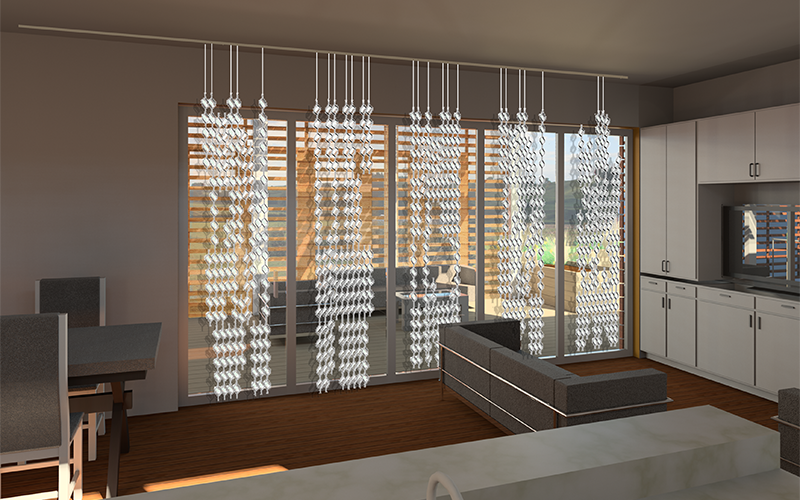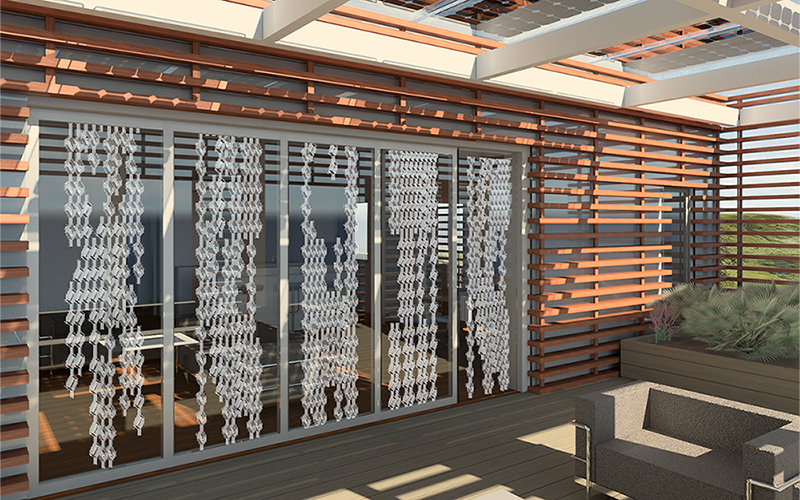a[FAB]
researching phase-change materials
Advanced Digital Fabrication | Winter 2015 | Professors Jeff Ponitz and Dale Clifford
Site: south facing glazing
Project Group: Charlie Crowe, Lisa-Marie Mueller, Francesca Sciamb
Back
a[FAB] combines computational design and programming with a simple fabrication processes to
create a functional, customizable assembly. By holding containers of engineered palm oil,
this elegant aluminum curtain becomes a thermal mass that allows passers by to see the material
change phases right before their eyes.
Engineered oil materials have a tested and reliable use as thermal mass. Often, they are hidden
behind drywall, out of sight. When placed in transparent containers, you can see the change
from solid to liquid and back again as the oil transitions from white when solid to transparent
when liquid. During the ten week long class, we designed, in a group of three, a modular system
that can showcase phase change material. We also used the fabrication shop to produce a full-scale
prototype.
My personal contributions to the project include creating initial study models and mock-ups
for possible design direction, actively participating in the design process for the final
project, and fabricating, assembling, and testing the full-scale mock-up along with my team
member Charlie. I also produced the renderings for the project. My team member Charlie
documented the assembly process and panel variations shown.
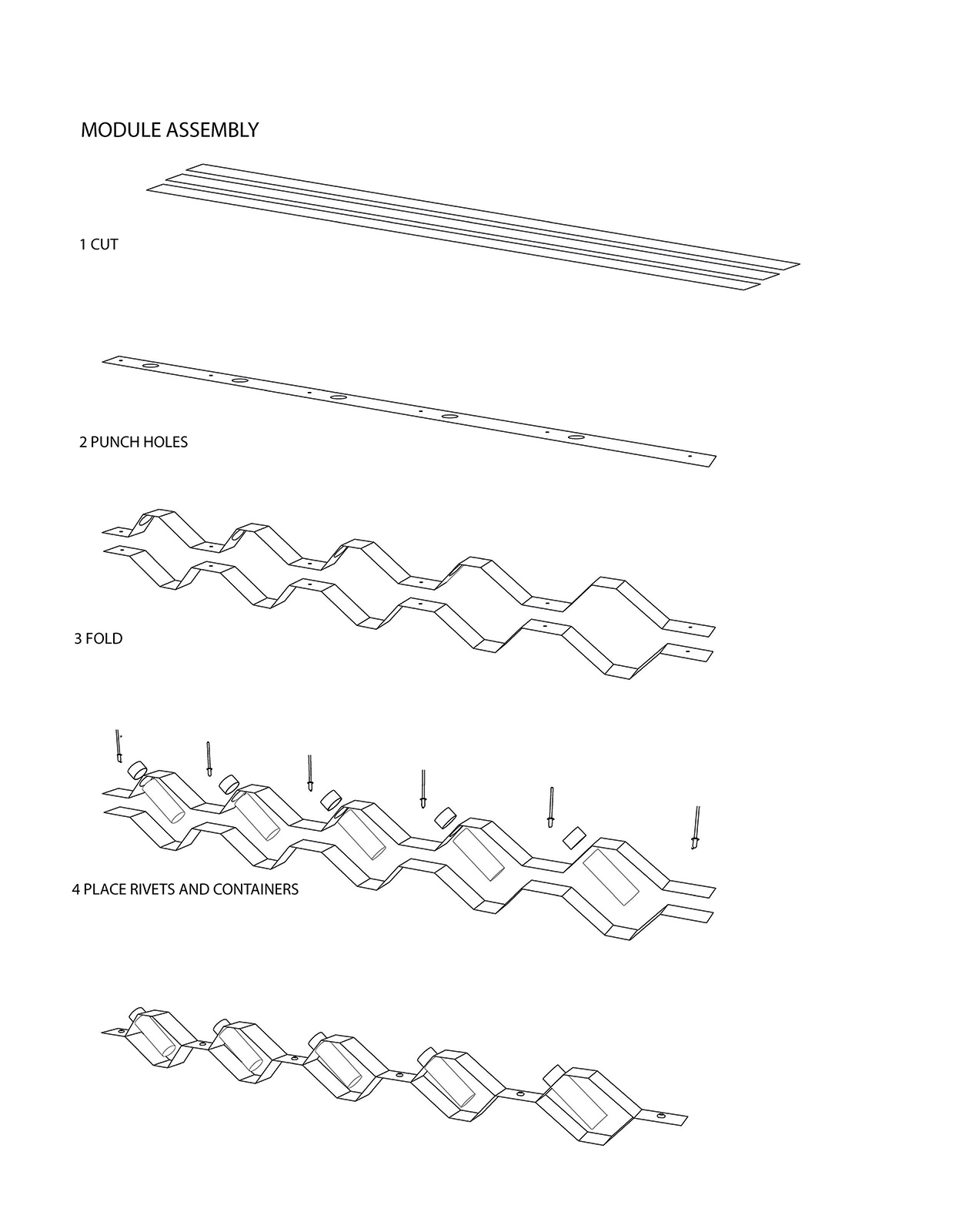
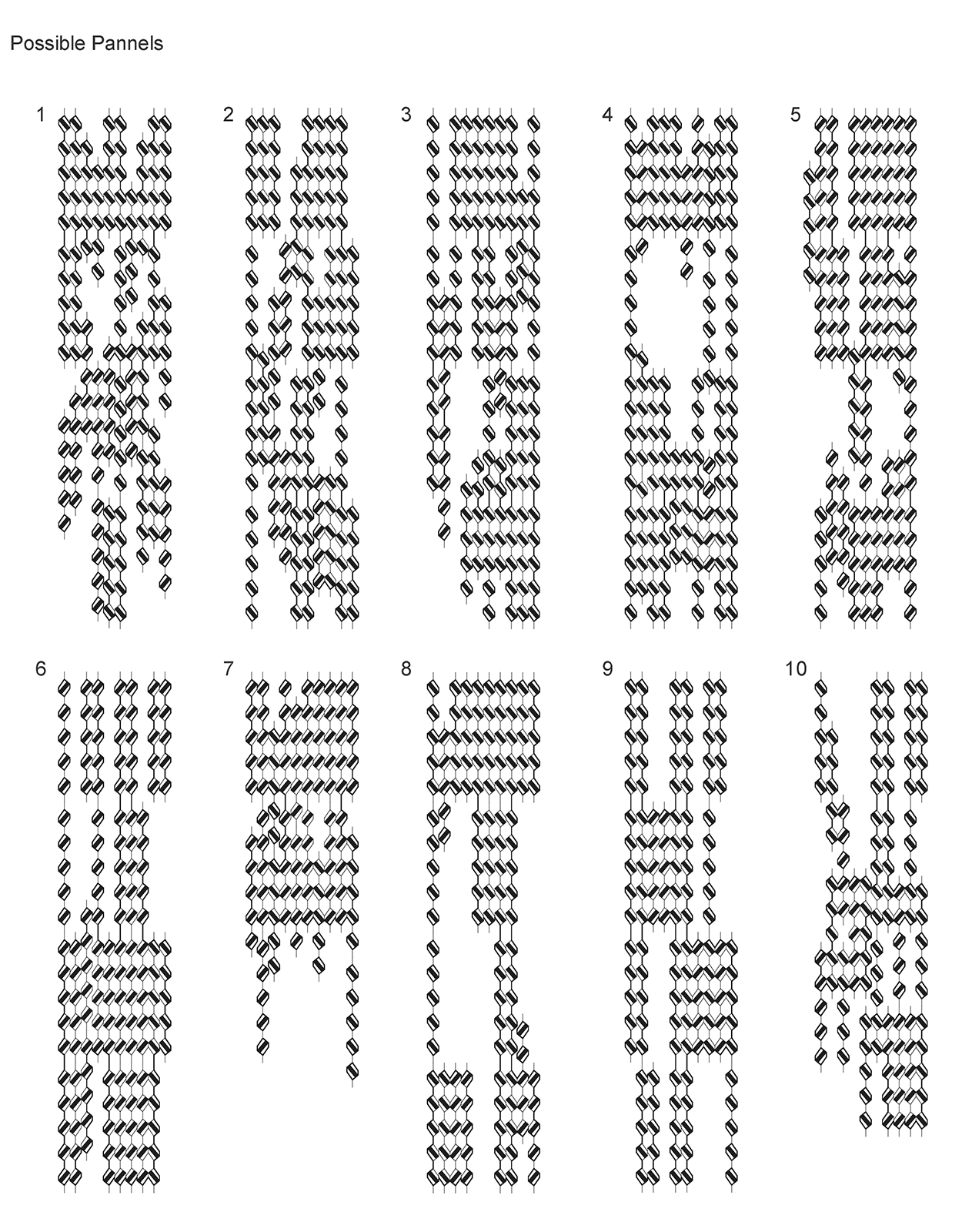
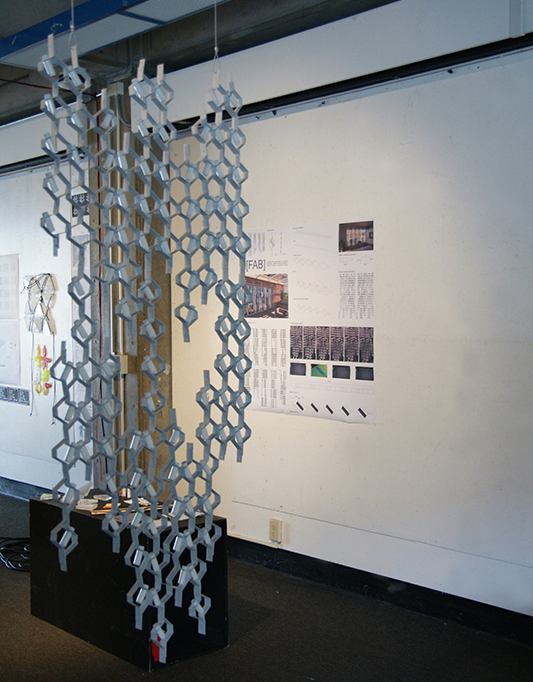
For our final assembly, we created a module that holds five palm oil containers. Each
module is made by cutting, folding, and punching aluminum strips. The strips can be made
from sheet material with minimal waste. Once the holes are punched, you insert the glass
containers filled with the engineered oil. The modules are then connected to form a panel.
The modules can be connected in a variety of ways so you can create many unique panels to
accommodate views and various quantities of phase change material.
As the oil melts, it absorbs energy to reduce the heat transfer into the home. An ideal
placement is over south facing windows, which allows maximum energy storage and creates a
brilliant performance as the oil changes from liquid to solid and back again.
